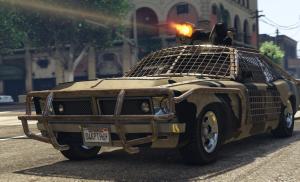Types of sailing ships. Types of warships
Welcome to my profile where I collect news about everything interesting related to robotics, finance, advertising, design. You will also learn about the most powerful types of warships, which smartphone to choose, and much more. Check out my collection, where I have already organized some articles on certain topics to make it easier for you to navigate. In my posts, I try to cover new trends on the stated topics so that the reader can navigate and keep abreast of events in the electronics industry and the economy. You will learn to understand fashionable gadgets and learn how not to get into trouble from a financial point of view.
Types of warships
The navy is a powerful defense of the state, which has direct access to the seas, oceans and large rivers. There are more than 60 types of surface vessels used in the navy. But I want to tell you about the most significant ones. So, depending on the task performed, the ships are divided into the following types:1. Cruisers. The ships are equipped with guided missile launchers. The cruiser can hit both surface, air and underwater targets, as well as shelling the coastal zone.

2. Landing ships It is customary to divide into large (BDK) and universal (UDK). These types of warships are responsible for transporting and landing troops and military equipment. The BDK is designed with a ramp in front to allow troops to disembark more quickly onto land. The UDC has great combat power and is comparable in potential to an average aircraft carrier.

3. Aircraft carriers- the largest ships of all that have been built to date. Several dozen aircraft can fit on board. These types of warships are equipped with a rig with fuel and weapons. Therefore, the army can operate for a long time far from the coast. The aircraft carrier provides defense, support for troops near the coast, and destroys enemy ships. Aircraft carriers are equipped with missiles and cannons. Despite their large size, these ships are very mobile.

4. Corvettes according to the class of weapons, they are also divided into two types: small anti-submarine and small missile ships. Their main purpose is to defend a convoy of ships against enemy ships or protect the coast.

5. Destroyers- one of the most versatile warships. They can deliver a powerful artillery strike. As well as missile and torpedo in the enemy fleet, they protect water bodies and the coastal zone from air attack. They are excellent at scouting.

6. Frigates– multi-purpose types of warships. This ship is capable of fighting far from the coast. Frigates support ground forces on the coast, provide landings, strike ships, provide ship defense, and perform reconnaissance functions.

If you want to learn more about each of the types of warships or just patch up your knowledge of maritime transport, you can go to.
Submarines are the strength of the Navy
This type of ships is much more effective in battles than surface ships. Of the advantage in the invisibility of maneuvers and sudden attacks on surface ships. Submarines also do an excellent job with radar reconnaissance, and also fire missiles at enemy ships. Submarines are divided into classes:1. Large. Their maximum speed is 25 knots, they are equipped with nuclear installations.
2. Medium. Gaining speed of 15-20 knots.
3. Small with a speed of 10-15 knots.

Submarines are armed with mines, missiles and torpedoes. There are special-purpose submarines designed to transport cargo or radar patrols.
Types of Russian warships
I talked about the most common courts. They are of strategic importance, and they have no equal in combat operations on the water. Now let's see what types of warships Russia from the above are represented in the fleet.The aircraft carrier was left alone - "Admiral Kuznetsov". There was another ship of this type, but it was sold to China. Interestingly, the cost of building one aircraft carrier can reach 6 billion dollars, and maintenance per month exceeds 10 million. The largest cruiser in the world that does not carry aircraft on board is "Peter the Great". The main purpose of the vessel is the destruction of aircraft carrier objects by the enemy. "Peter the Great" can perform tasks anywhere in the world on the water.





Things are better with UDC. There is a Mistral project, according to which a French company is building 2 UDCs for the Russian fleet - Vladivostok and Simferopol. On board these ships, Ka-52 Alligator helicopters will presumably be placed. Above, we talked about corvettes, and so, there are 4 of them in the Russian fleet. In addition, 4 more ships are under construction. Already existing corvettes are part of the Baltic Fleet.






Particular attention is paid to the modernization of submarines. On the basis of the Russian Navy there are 48 nuclear and 20 diesel submarines with different purposes and equipment. In addition, after 2030, it is planned to create fifth-generation submarines with appropriate weapons based on cruise missiles of the Caliber type and ballistic missiles of the Bulava type. The state cannot fit all types of warships in its fleet, but if you invest in the development of defense, you can reach the ideal.





I try for you, my readers, so I will be grateful if you leave a comment on this and other posts. It is very important to hear your opinion and debate with the smart people that you are. If you like blog content, bookmark it in your browser to keep up to date with updates. I would be grateful if you contribute to the development of the blog - just share your favorite article on social networks. The more subscribers, the more quality articles. Check out my other articles and have a good time.
Since ancient times, and to this day, the navy is the backbone of almost any country that has access to the sea. Someone has powerful ultra-modern ships, someone calls a few old boats a fleet. But the essence is the same for everyone, these ships guard the expanses of water.
The warship has come a long way from biremes and galleys to modern nuclear submarine missile carriers and aircraft carriers. But the sailors, like no one else, observe traditions, especially in the names and classification of ships.
Warships before the 20th century
In ancient times, the bulk of ships adapted for coastal navigation were divided according to the number of rows of oars. The presence of a large number of rowers, who required a large amount of food, did not contribute to the development of long-distance navigation.
With the advent of the sail, the development of the fleet and the enlargement of ships began. Along with the development of navigational instruments and technologies, the fleet developed, which by the 15th century made it possible to make the first major voyages across the oceans.
The wealth of the New World spurred European shipbuilders, and already in the 16th century, the design of warships began to develop and become more complicated. A little later, the fleet will begin to be divided into classes and ranks. At that time, either the number of guns or the ship's sailing armament was considered the main criterion.
Ships, depending on the number of guns, fell into the 1st rank (about 100 guns and more), 2nd rank (about 90 guns), 3rd rank (about 75) and so on, up to rank 6.
The second classification divided the ships depending on the presence or absence of certain sails. There were three-masted and two-masted sailboats, as well as single-masted varieties of very small ships, which were used, as a rule, to transport mail.
The names of the ships could be any related to personal names, religious or geographical component. There were cases when, for special merits, the name of the ship was left in the fleet, although the ship itself might not exist. In the Russian fleet, the most striking example was the brig "Mercury" and several ships "Memory of Mercury".
With the advent of mechanisms and the transition from sail to car, many names of ship types took root and remain to this day. The main difference of any ship was the size, displacement or tonnage. The history of steamships, although not as many centuries old as the sail, brightly inscribed pages in the naval chronicle.
The development of technology has brought to naught entire groups, once formidable ships, and transferred classes to other ranks. So, for example, the twentieth century showed the weakness of battleships in front of aircraft carrier groups. The Second World War generally made major changes to the picture of warships in the world. And if 300 years ago the frigate was a large ship, now it has descended to the stage of patrol ships.
According to international maritime law, each ship falls into its own specific class. These rules, in order to avoid confusion, were used by Soviet sailors, as well as their successors, the ships of the Russian Navy.
Ships are divided by tonnage, or displacement, as well as by the type of weapons on board, that is, one can say that the old system has entered the new realities of modern ships.
According to these documents, the largest ships are included in the strike group, and these are:
- aircraft carriers, depending on the tonnage, can be large, medium and small, respectively, the strength of naval aviation on them also differs;
- cruisers, also differing in displacement, having more versatile tasks, from guarding convoys and aircraft carriers to intercepting enemy ships and shelling the coastline;
- submarines, often superior in size and armament to surface ships, are divided according to their size and the type of power plant used;
- destroyers carrying out reconnaissance and security of a group of ships carrying the main armament in the form of mines and torpedoes;
- torpedo boats, large of which are designed to attack large ships in squadrons, while small ones operate in the coastal zone;
- patrol ships designed for combat protection of convoys and the water area of a port or other object.
There is also a finer division of these classes of ships, but in each country they have their own characteristics and characteristics.

The second large subclass includes auxiliary vessels. They can be conditionally divided into several groups:
- floating bases necessary for replenishment with everything necessary, depending on the specialization of the base for each class of ships;
- supply ships, unlike bases, are more mobile and fast, although the goals and tasks for them are the same as above;
- repair facilities, floating workshops necessary for the repair of ships on the high seas;
- rescue ships designed to assist both submarines and surface ships in case of emergency;
- research ships testing new technical systems;
- training ships that serve to obtain and master the skills of being at sea;
- special ships that test weapons systems and complexes for spacecraft.
The crews of support ships solve many tasks to maintain the combat capability of the main fleet. In the Navy of the USSR, there was also a system of differences between ships by name. So, in the Northern Fleet for a long time there was a unit of Soviet guards, known as the “Bad Weather Division”.

The first in the series was the ship "Hurricane", and in honor of it, subsequent ships of the same class, displacement and armament received "rainy" names. For example, the waves of the Barents Sea plowed at different times "Storm", "Metel", "Purga" and other ships with similar names.
On the ships themselves, for many years there has been a division into warheads, or warheads, each of which designates a part of the ship and its purpose.
Warships of the fleets of different countries
The ship classification system adopted by the international community has proven to be inappropriate for some fleets. So, the Japanese ship division system can cause at least a lot of questions from an ignorant person. Japan, having a serious fleet, one of the best in Asia, meanwhile went a long way to modernize the ships under construction.

As a result, the same class of warships can differ significantly in their characteristics depending on the year of manufacture. Thus, the same destroyers in service can meet all modern requirements if they were built recently, or they can match frigates or corvettes of other fleets.
Helicopter carriers are considered the main force of the Japanese fleet.
Despite their name, they are essentially light aircraft carriers equipped with state-of-the-art electronics. This class includes two types of ships, "Hyuuga", represented by a pair of ships, and "Shirane", also a pair of ships. Interestingly, the last two ships were introduced into the fleet back in the 1980s.
The second category consists of URO destroyers (guided missile weapons). There are also ships of various types. The most modern, such as "Atago", represented by two ships. The Kongo class consists of four ships built in the 1990s. Hatakase type, created in the second half of the 1980s, with a couple of ships now used as training ships.

Another category, the third, again destroyers, but more similar to the brothers of the other fleets. This includes many types, broken down depending on the time of construction. The fourth category, submarines, is represented by 17 diesel submarines. The fifth includes landing and auxiliary ships, as well as icebreakers.
Its classification in the US Navy. Vessels are divided according to their purpose. To distinguish them, an alphabetic encryption system was introduced. So, for example, the letters "BB" mean BigBattleship, corresponding to the class of battleships in other fleets.
It is interesting that sometimes the ship changes its class, but the letters are left by the decision of the naval command.
This happened several times after a major reform of the fleet throughout the twentieth century. Common to all ships are the letters "USS", which means "ship of the United States" in translation.
Aircraft carriers are among the largest types of ships, usually denoted by variations with the letters "CV". They differ in size and type of aircraft, airplanes or helicopters, but are grouped into one class.

The rest of the surface ships have the original letter designation, such as "C" - cruisers, "D" - destroyers, "F" - frigate. In different years, both watchdogs and monitors were found under codes, but over time they were removed from their composition by the US Navy.
The submarine fleet wears the obligatory letter "S", which also has many additional meanings depending on the type of weapon or power plant. The letter "P" means boats, also differing in size and types of weapons located on them.
There are quite a lot of ciphers used during the Vietnam War, and then simply canceled.
You can also put American Coast Guard warships, formally a separate unit, here. The letter "L" means that the vessel belongs to the landing fleet. It differs in huge landing ships, transporting soldiers from one continent to another, and landing craft, landing infantry and equipment directly on land. The latter have the trait of amphibians.

Much attention was paid to the development of these boats during the Second World War, when the Marines landed and fought on the Pacific Islands and in the famous landing zone in Normandy. The letter "A" denoted all auxiliary vessels.
Despite the former glory of the mistress of the seas, the British fleet has lost all its former power. However, the authority of the English sailors is still on top. The classification of the ships of the British Navy is quite difficult to carry out.
Of course, among them are the same aircraft carriers, destroyers, corvettes and boats, but they differ in pennant number.

Each flotilla had its own special pennant, and the ship in this flotilla was assigned a number, and then a letter indicating the class of the ship. It is interesting that in numerology there is no number "13" at all, which is considered unlucky among sailors.
The system of classification by numbers and pennants continues to exist, with minor changes since the First World War.
The history of the navy goes back hundreds of years. Since sailors are extremely superstitious people, they keep traditions, including those associated with their “native home” - a ship, in the names of ships, and in their classification, you can find many old terms and designations that do not make the fleet less effective.
Video
What would you call the boat...
People who are not entirely versed in maritime affairs are inclined to call any more or less large floating craft they see ships. But real sea wolves will only grin at such explanations. So what is a ship and what are the types of ships? The most capacious term that covers the full range of watercraft is "vessel". Even pedal boats are ships. Any structure that has a waterproof body and moves, leaning on the water surface (including under water), belongs to this category. There is also such a thing as "aircraft". This term is applicable to devices designed to conquer the air.
The concept of "ship", if we are talking about a watercraft, has a narrower meaning and is used to refer, as a rule, to military and large sea vessels. In the era of the sailing fleet, this was the name given to three-masted combat units with direct sailing weapons. The modern Russian language fully allows the use of the concept of "ship" in relation to civilian ships for various purposes, despite the common opinion among military sailors that this vehicle is exclusively a transport carrying a naval flag. At the same time, the phrase "warship" is also correct and is also used as a legal concept.

How are maritime transport classified?
Civil ships are usually classified according to their purpose. Distinguish between transport, fishing, service and auxiliary and watercraft of the technical fleet. Transport ships, in turn, are cargo, passenger, cargo-passenger and special. They make up the bulk of the fleet. There are many types of ships engaged in cargo transportation. These are bulk carriers (created for bulk cargo), container ships, lighter ships (carrying floating container barges), refrigerated and trailer ships, and timber carriers. Cargo also includes bulk types of maritime transport: tankers and gas carriers. If the ship is capable of taking on board more than twelve passengers, then it is classified as a passenger ship. At the same time, cargo-passenger is called one in which more than 40% of the area is allocated to the cargo. Passenger ships serve regular lines, including transoceanic ones. Another class of such vessels is intended for tourist cruises. There are also boats for local communications. Special maritime transport includes ferries (including rail), transport tugs and pusher tugs. Thus, we can conclude that there are a huge number of varieties and classifications of ships, it remains only to learn more about them.

The first sailboats
The most ancient images of sailing ships date back to the third millennium BC. The place of their appearance is the Nile Valley and the coast of the Persian Gulf. The ancient Egyptians built papyrus boats and fitted them with sails. On them, they could not only move along the Nile, but also go to sea. It is known about their expeditions along the northeast coast of Africa.
The Phoenicians deservedly won the palm among the ancient navigators. They created new types of ships. Such means had oars and a rectangular sail. They built not only merchant boats, but also warships. It is they who are credited with the development of galleys and the invention of the ram. It is believed that the Phoenicians were the first to circumnavigate all of Africa.
The Greeks adopted the art of building ships from the Phoenicians. They were able to master the Mediterranean and Black Seas, pass Gibraltar and reach the British Isles. They created biremes and triremes - galleys with two- and three-tier rows of oars. These were the first types of warships.
Rowers at oars remained the main propulsion of ships, but with the development and improvement of sailing equipment, the role of the wind also increased. Sea trade routes to India and the Far East were established, and the time of sea crossings was reduced.
Northern sailors
A little later, the Vikings conquered the seas. They created the best types of sailing ships of their time. Drakkars gained the greatest fame - combat marine watercraft, distinguished by high speed, reliability and lightness. They were adapted for entering rivers and mooring to gently sloping banks. If necessary, northern warriors carried them on their hands. Shields were fixed along the sides, and oars were passed through special hatches, which protected the rowers during the battle. For trade and transportation of settlers, the Vikings built knorrs - wider and slower ships compared to drakkars. Knorrs had a larger draft and could accommodate up to 40 people. The sailing equipment allowed walking at an angle of 60 degrees to the wind. The masts were removable.

The Vikings could stay away from the coast for a long time, guided by the sun and night lights. They used observations of the habits of marine animals and birds, took into account sea currents, ebbs and flows. On their boats they reached Iceland, Greenland and North America. They paved the way from the Varangians to the Greeks, they felt confident in the Mediterranean.
The era of great discoveries
The fifteenth century was marked by great sea voyages and discoveries. This became possible thanks to the creation of new, more advanced types of sea ships capable of crossing the oceans. It was then that they learned to build three-masted ships. The way the ship's hull was formed has changed - the boards were not laid in overlap, but close to one another. The name of the type of sheathing became the reason for the name of a new type of transport - caravels. The largest cargo ships at that time were the three-masted Portuguese carracks, which had two decks. The hull of the ships had a rounded shape - the ratio of length to width ranged from 2:1 to 2.5:1. This made it possible to improve seaworthiness, to increase the safety of long sea voyages. The main types of military water transport were still rowing galleys carrying sails.

Renaissance ships
The main features of the sailing fleet, which survived until the middle of the 19th century, were outlined in the sixteenth century. It was during this period that European states form regular navies. Shipbuilders have mastered new types of ships with a large displacement. Sailing equipment included different types of sails - traditional rectangular and oblique. Special naval guns were created, which began to be placed in several tiers, clearing the upper deck of them.
The main types of ships of the 16th century were military galleys and galleasses, military transport galleons, caravels and carracks, transport aaks and flutes.

The main types of sailing warships were frigates, corvettes and sloops. Frigates, which had the task of capturing water spaces, subsequently became the most common. They were distinguished from battleships by the presence of one gun deck. Corvettes became a separate branch of their development - faster units with smaller cannon armament. The sentinel service, reconnaissance and the fight against pirates were conducted by sloops. They were also assigned transport and forwarding tasks. They were not involved in the fight against other military water transport.

Schooners were widely used in the merchant fleet. Their distinguishing feature was the presence of at least two masts with slanting sails. Large cargo transportation was assigned to barges. For VIPs, they began to build yachts - high-speed comfortable ships. They were transformed into modern types of ships. The photo above shows one of the elite yachts of those times.
In the filibuster far blue sea...
The history of the sailing fleet is inextricably linked with piracy. Of course, no one specifically built any pirate ships. Gentlemen of fortune adapted different types of ships for the needs of sea robbery - that which fell into their possession. A rebellious crew could capture the ship. Occasionally this happened with the participation of the captain himself. But most often pirates made seizures at sea. After that, the ships, as a rule, were remade. The restructuring came down primarily to adapting the deck for the installation of powerful artillery and expanding the space for the boarding team. To do this, all the stern and bow superstructures were removed from the funds, the elements of decorations were cut off. Additional guns were installed along the ship forward and backward. The rigging was changed in order to give the ship greater speed. Apparently, the pirates did not lack the necessary materials - they also obtained them by robbery.

The most common types of pirate ships were brigantines, schooners and sloops. Large boats were rare in the pirate fleet. Corsairs did not disdain small feluccas, longboats and pinnaces.
In addition to combat, the pirates used transport ships. As a rule, these were captured Dutch flutes, as well as their British counterparts - flyboats.
Military means of modernity
Modern types of warships, in terms of tasks and weapons, are quite diverse. The list of them is impressive.
The basis of the power of the modern fleet is aircraft carriers and cruisers (including submarines). They are needed to gain strategic superiority at sea, strike at enemy territory, and solve a wide range of military tasks. Destroyers (destroyers) operate as part of attack aircraft carrier groups, can independently destroy surface and underwater enemy ships, provide anti-missile and anti-aircraft defense, and support landings. Especially for the fight against submarines and the protection of their formations, large and small anti-submarine ships are used. Missiles are designed to deliver unexpected missile strikes at long distances from targets. Mine defense is provided by mine-sweeping types. Sentinel service is carried out by patrol boats. And for the transportation and landing of troops, landing ships are used. In addition, the modern fleet is unthinkable without reconnaissance and control vessels.

Filled with space maps in the tablets ...
Even in ancient times, our ancestors dreamed of flying. The tale of the flying ship determined the name of the aircraft, which was destined to conquer the sky. The concepts of "spaceship" and "skyship" were used by Konstantin Tsiolkovsky to designate devices capable of making a manned flight into outer space. If we talk about the types of spacecraft, then first you need to turn to the concept of "spacecraft". It is understood as a device that is designed to perform various tasks in space, as well as on the surface of celestial bodies. This category includes artificial Earth satellites, interplanetary stations, and planetary rovers. A spacecraft that is designed to transport goods or people into space is called a spacecraft. Its main difference is sealed compartments or compartments that support life support.
Types of spacecraft are classified according to the type of cargo delivered, the method of control, the possibility of return and reusable use. They are cargo, automatic and manned. Manned spacecraft contain descent vehicles. There are also reusable cargo and manned ships. Among the most famous are Vostok, Soyuz, Apollo, Shenzhou, Space Shuttle.

Conclusion
We got acquainted only with some - the most famous - types of ships. The list of them can be continued for a very long time. And it is unlikely to be exhaustive. Because the flight of human imagination is limitless, and the challenges that life sets inspire designers and engineers to find new solutions. Who knows what ships will be like in just a hundred years. and what new spaces they will have to conquer... One can only guess about this at the present time. The main thing is to know what types of ships are now. And we told you about it.
A sailing fleet is a group of ships that move with the help of a sail. As a rule, the use of the fleet was immediately accompanied by the appearance of the ships themselves, which are suitable for long expeditions or naval battles.
A Brief History of Sailboats
The first sailing ships appeared in the last years of antiquity. They consisted of primitive sail-ridged ships and could reach speeds higher than the wind. A group of such ships cannot be called a full-fledged fleet, because. each acted independently in battles, and the outcome of the battle was decided mainly by numbers. The main technique of confrontation was ramming, bulk and boarding. Large sail-ridged ships were equipped with additional weapons: a stone thrower (mainly for taking coastal fortresses), a harpoon and Greek fire.
In the 12th - 13th centuries, ships appeared carrying military guns on board. However, they have been developed in the direction of personal power. Vessels of the Karakka type could fight alone against a small group of ships, as well as conduct raider operations.
If we are talking about a full-fledged sailing ship, it was first built in the British Empire in the 16th century. He bore the name Great Harry ("Great Harry"). The first Russian military sailboat was launched in 1668. It did not belong to a specific type and bore the name "Eagle".
The ship "Great Harry"
A regular navy of sailboats appears at the beginning of the 17th century in the Western powers. In overwhelming advantage, these were the colonial empires - Britain, Portugal, Spain and France. After 100 years, a full-fledged fleet was formed in almost all of Europe, which later played a key role in expansionist companies. Also, warships were captured by many criminals - pirates.
 17th century sailboat era
17th century sailboat era With the discovery of the steam engine, large battleships of the sailing fleet existed for some time, but the sail no longer served as the main force for the movement of the ship. It was used as an additional means of navigation in case of boiler breakdown or to save fuel in high winds. Sailing ships were completely replaced by dreadnoughts and battleships. A sailboat with an unprotected mast had no chance against an armored ship. It is worth noting that in the 60s of the 19th century there were no rifled artillery and dreadnoughts were practically unsinkable.
Sailing vessel classification
The demand for ships was based on the tasks they performed - for expeditions or military operations. In the second case, the ship was required to achieve specific tactical goals, which led to the development of different types of ships. The main characteristics of any combat naval unit were: displacement, the number of artillery pieces and masts. In the end, a classification of ships by rank was formed:
- The first three included only ships of the line;
- 4 - 5 ranks were frigates;
- 6th - 7th rank other smaller vessels (brigs, tenders, corvettes).
Simultaneously with the development of the main combat units, additional ships were formed, which were supposed to solve auxiliary tasks in order to achieve strategic goals on the battlefield.
Basically they were:
- firewalls. A ship with explosives on board to set fire to an enemy ship. They developed through simple preparation. Fireships were not built and, in fact, they are not an independent class of the vessel. The decision to use them was often used already in the course of the battles; for preparation, a disabled ship was used, which could not fight, but was still capable of sailing. There was a special effect if the enemy ship was in close formation with others or was in a bay.
- Bomber ships. In terms of its capabilities, it did not differ from the main battle ships - a large 3-masted vessel with artillery pieces. It had low sides and was intended for shelling coastal infrastructure (bays, docks, fortifications). In a naval battle, he could also effectively prove himself, but because of his sides he became an easy target.
- Transport ships. Among them were also different types of ships for specific tasks (clippers, sloops, packet boats, etc.)
It is worth noting that there were practically no cargo ships among the ships of the sailing fleet of the colonial powers. Cargo was stored on the main ships, and if the need for a transport ship did appear, they were hired from private individuals.
Main combat sailing ships
The navy in the Renaissance played an important role for any state, and its power determined the world politics of that time. The development of ships continued for two centuries before they received a clear classification. The main warships of the sailing fleet were:
- Brigantine. 2-masted vessel with straight foremast and oblique mainmast. Appeared in the 17th century and was used for reconnaissance operations. There were 6 - 8 guns on board.
- Brig. 2-masted ship of the 7th rank with a displacement of up to 400 tons. It was the main reconnaissance messenger ship in all the fleets of the world. Also on board had from 8 to 24 guns, which were used for shooting when escaping the chase. It appeared as a more practical and simpler version of the brigantine, but did not completely replace them.
- Galion. The largest ship from the 15th - 17th centuries. It could include from 2 to 4 masts, and the displacement was up to 1600 tons. Halions were the dominant ships in battles before the advent of battleships.
- Caravel. 3 - 4 masted universal vessel with a displacement of up to 450 tons. It was more widely used in expeditions. Good seaworthiness is achieved thanks to versatile masts and superstructures at the bow and stern. Despite the high side, the caravels were only single-deck ships. In battles, they often served as a cargo ship, capable of shooting back from small ships and during boarding.
- Karakka. Large 3-masted ship of early times. It had a displacement of up to 2000 tons and 30 - 40 guns on board. The ship could carry a large number of passengers, up to 1300 people. Karakka has proven itself in the 13th - 16th centuries as a powerful vessel capable of fighting back alone. However, with the formation of fleets and the appearance of large ships, they lost their significance.
- Corvette. 2 - 3 masted vessel with a displacement of up to 600 tons for tactical tasks. Appeared in the 18th century and one of the two (along with the frigate) classes of ships that have survived to this day. It was used for cruising hunting or destroying single targets, less often for reconnaissance. Equipped with an open or closed artillery battery with dozens of guns.
- Battleship. The largest 3-masted vessel with three artillery decks (mostly with enclosed batteries). According to the standard, ships with a displacement of up to 5000 tons were considered battleships, but many ships of this type and up to 8000 tons are known in history. The entire battery could include up to 130 pairs of guns located along the sides. They were used mainly to deal with the same large ships and shelling the coastline. Battleships are one of the few combat sailing ships that served in the naval forces until the beginning of the 20th century.
- Flutes. 3-masted transport sailboat. The displacement was arbitrary, but often did not exceed 800 tons. They had up to 6 guns and were distinguished by high maneuverability. Often used by corsairs for robberies. In Russia, the first flutes appeared in the Baltic Fleet in the 17th century.
- Frigate. A 3-masted ship with a displacement of up to 3500 tons. The next in power after the battleship and had up to 60 pairs of guns on board. It was used as a large support ship on the entire front line or to perform communication tasks (guarding merchant ships). It was the main warship of the sailing fleet of the Russian Empire.
- Sloop. 3-masted ship with low sides. It had a displacement of up to 900 tons and 16 - 32 artillery pieces. Served as a long-range reconnaissance or expeditionary vessel. Sloops were popular in the 17th and 19th centuries among Russian freight forwarders for round-the-world travel.
- Shnyava. A small sailboat with 2 straight masts, popular in the Scandinavian region. In Russia, they were actively used by Peter I for reconnaissance operations before battles. Displacement up to 150 tons, and the number of guns ranged from 2 to 18.
- Schooner. Vessel with arbitrary, mostly large displacement. It could include up to 16 guns and was distributed as part of the sailing fleet of the Russian Empire. Battle schooners were exclusively 2-masted, and messenger ships had an arbitrary number of masts.
In some countries there were unique types of warships that did not become widespread. For example, Portuguese ships, comparable in displacement to a frigate, but having several gun decks, were called cruisers, although this type was already assigned to more modern ships.
Large ships of the Russian sailing fleet
The first mention of Russian sailboats can be found in The Tale of Bygone Years, which tells about the campaign of Prince Oleg to Byzantium on ships. The Russian sailing fleet was already formed by Peter I. The construction of the first ships proceeded in the likeness of European ones. The first major battle of the domestic fleet is celebrated with the Swedes in the Northern War. In the future, naval forces only begin to grow.
 Large ships of the Baltic Fleet
Large ships of the Baltic Fleet The largest military sailing ships in Russia (as well as in the world) were battleships. The first battleships were laid down at the Ladoga shipyard, which had no experience in building large ships, as a result of which the ships received poor seaworthiness and maneuverability. List of sailing battleships of the Russian imperial fleet, which became the first in service in the Baltic:
- Riga,
- Vyborg,
- Pernov,
All three ships were launched in 1710 and were classified as battleships of the 4th rank. On the sides were placed 50 guns of various calibers. The crew of the ship was 330 people. Sailing ships in the Russian fleet also lost their importance with the development of steam engines and battleships, but were still used for reconnaissance operations until the time of the civil war.
Suggested reading:













